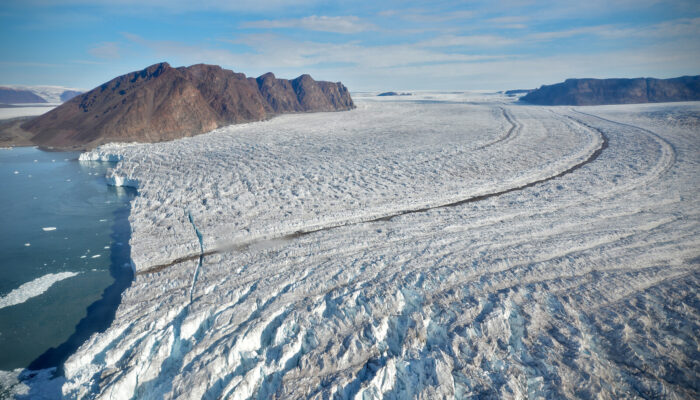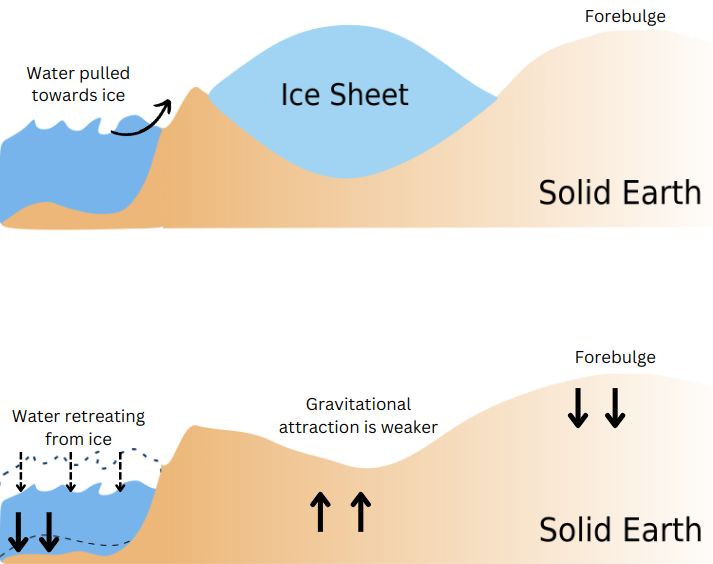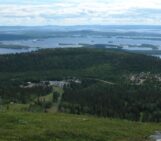
As the Geodesy blog team (we are growing, horaay!), we wanted to create a space for researchers to talk about their work/papers in a more simplified language. For the first post in this series, we said “Wouldn’t it be cool if we learn more about Glacial Isostatic Adjustment (GIA) models?” then we realised that we first need to uncover what GIA is. So, we passed the pen to Holger, Rebekka and Yucheng. Here is how they explained it to us:
Throughout its history, Earth has undergone significant transformations, notably the oscillation between cold and warm periods, which catalyzed the creation and dissolution of kilometre-thick ice sheets in Northern Europe and North America. This mentioned process involved the extraction of water from the oceans and the depression of the Earth’s surface beneath these colossal ice masses by several hundred meters. Consequently, the redistribution of mass within the Earth’s system altered and influenced its gravity field and rotation. The intense variations in the Earth’s crustal stress at times triggered earthquakes, especially towards the end of the glaciations. The cumulative response of the Earth to these ice age dynamics is known as glacial isostatic adjustment (GIA).
GIA represents a global phenomenon observable even millennia after the ice sheets have melted. This longevity stems from the Earth’s mantle viscosity, which, averaging around 1021 Pascal seconds (Pa s), reacts with a substantial time lag to rapid loading or unloading. So just imagine the difference between the thickness of water (1 Pa s) and the thickness of honey (104 Pa s). Then take that and multiply that difference by ten billion-billion (thousand trillion)! That’s how much more viscous the Earth’s mantle is compared to water. Consequently, the surface in previously glaciated regions continues to rise today, such as in Northern Europe, at a rate of about 1 centimetre per year. Did you know that we human beings have to make strategic adjustments to adapt to this land uplift? One of them is relocating harbours to prevent silt buildup, which can have a major impact on the environment. If we look into history, there is the example of Östhammar; an ancient port that could no longer be reached by boat by 1491. The city was relocated to a point that was closer to the sea (Whitehouse, 2018).
However, GIA didn’t only affect areas once covered by ice. Over glacial cycles spanning tens of thousands of years, interactions between ocean and continental-scale ice sheets can cause global mean sea level to fluctuate by more than 100 meters, radically reshaping our familiar landscapes. For instance, during the Last Glacial Maximum around 21,000 years ago, the global mean sea level was approximately 130 meters lower due to extensive ice sheets in North America and northern Europe, transforming shallow continental shelves into dry land, such as mid-northern Australia, southern Asia, the Bering Strait, and the North Sea. The melting of the ice sheets, mainly in North America and Northern Europe, has increased the sea level since then.

Glacial Isostatic Adjustment. Figure courtesy: Öykü Koç
One of the most fascinating effects of GIA comes from gravity. Since the ice sheet is an enormous mass, it exerts a tremendous gravitational force, drawing nearby water towards it. This will make the nearby relative sea level (the distance between the sea surface and solid Earth) slightly higher. When the ice sheet melts, due to the decrease in this gravitational pull, the relative sea level near the ice sheet will decrease instead of increasing. To compensate for this decrease as well as the additional water mass added to the ocean due to the melting ice sheet, the sea level in regions far from the ice sheet will rise more than the global average. Additionally, mass redistribution from the ice sheet to the ocean will cause a perturbation to the Earth’s rotational vector, this will also change the gravity and, in turn, the sea-level change pattern. In fact, when the water was in the ice masses near the North and South poles (during the Last Glacial Maximum), the Earth was spinning faster because the mass was closer to the Earth’s rotation axis (it’s like a figure skater putting the arms close to the body). Now that a large part of the ice masses has melted and the water is redistributed across the entire ocean, water accumulates closer to the equator and thus the Earth spins slower (again, like a figure skater who takes the arms out). In addition to this, the rotation axis of the Earth changes during a glacial cycle due to the mass (re-)distribution.
The effects of GIA are clearly discernible in the data collected by gravity field missions such as GRACE and GRACE-FO. The rising land results in a mass deficiency within the mantle beneath the uplifted area. This triggers a flow of mantle material from the surrounding regions, manifesting as a mass variation detected by the GRACE satellites, equating to slightly over 1 μGal per year (for context: this is equivalent to ~1-2 mm crustal uplift). This magnitude often masks other processes, such as long-term hydrological mass changes. Furthermore, GIA has a noticeable impact on today’s large ice sheets in Greenland and Antarctica due to the distinct total mass and mass distribution during the ice ages. Understanding and accurately accounting for the GIA effect is vital for precise GRACE data analysis.
Thus, GIA is visible in many geodetic applications but is also of interest to many other geoscientific disciplines. Models are necessary for understanding and correcting the effects of GIA. Efforts toward refining GIA models persist, considering the Earth’s physical properties, ice sheet dynamics, and their impact on groundwater, oceans and future sea-level projection. Achieving a flawless GIA correction in geodetic data remains an imperative objective.
Interested to learn more about GIA? In July 2023, a GIA Training School was organized in Gävle, Sweden, and the lecturers were recorded and made publicly available here.
References
Whitehouse, P. L. (2018). Glacial isostatic adjustment modelling: historical perspectives, recent advances, and future directions. Earth surface dynamics, 6(2), 401-429.




